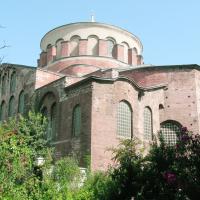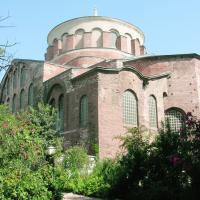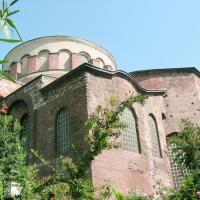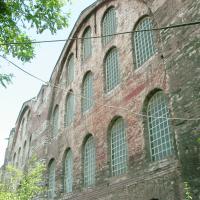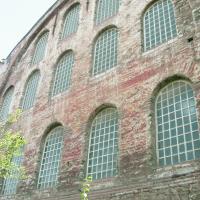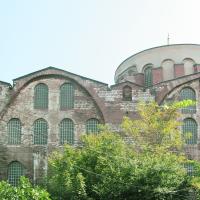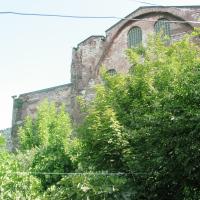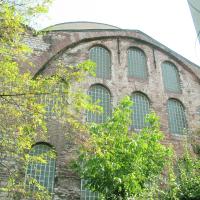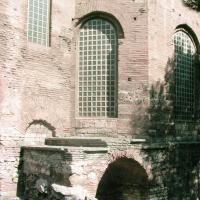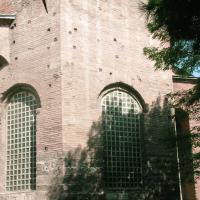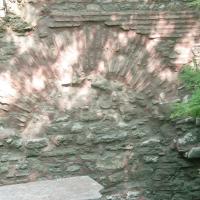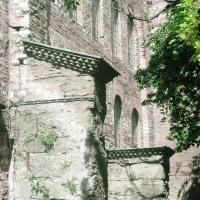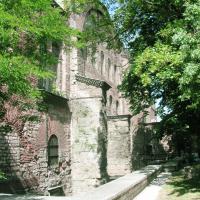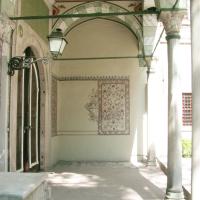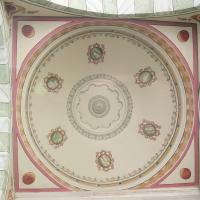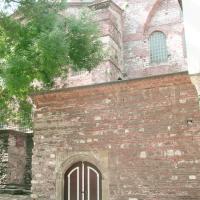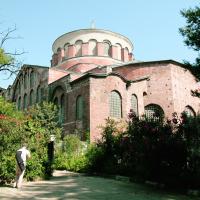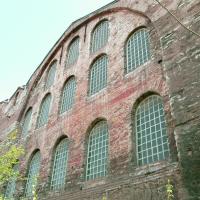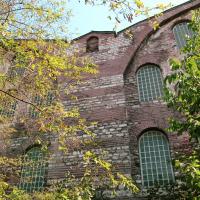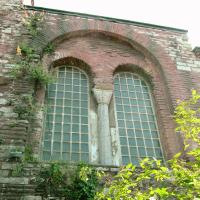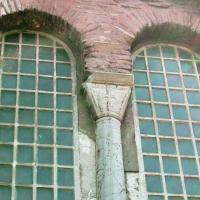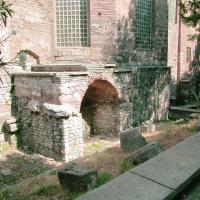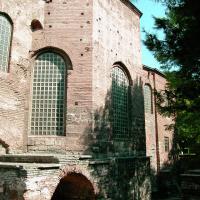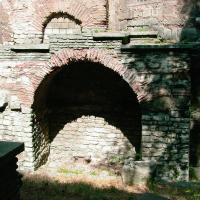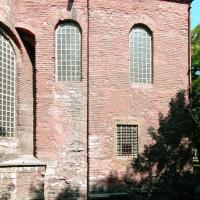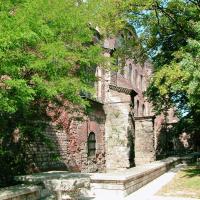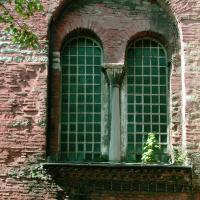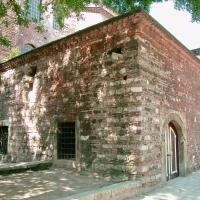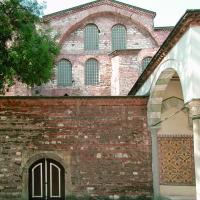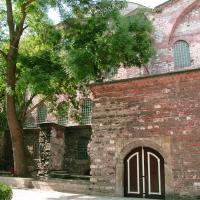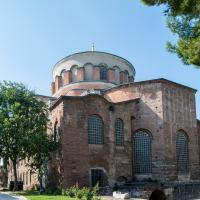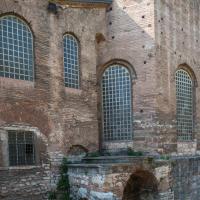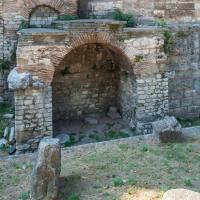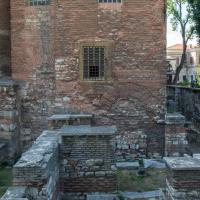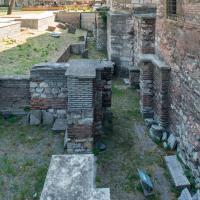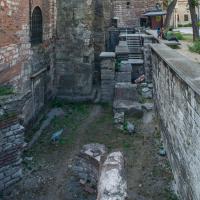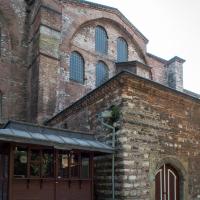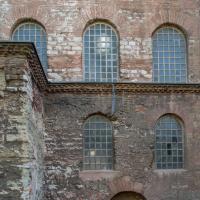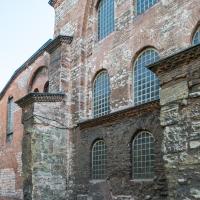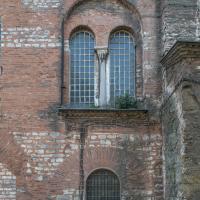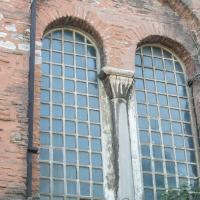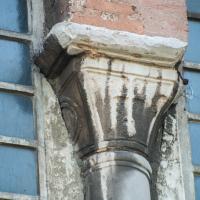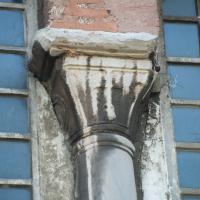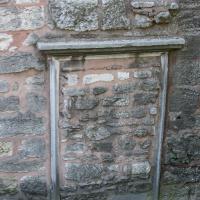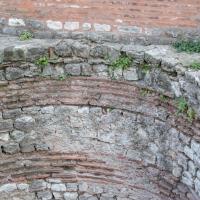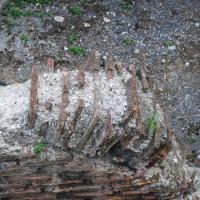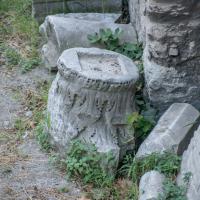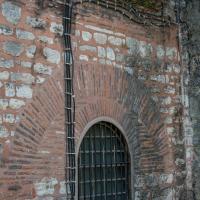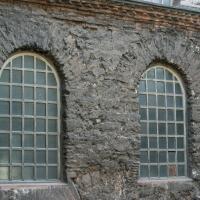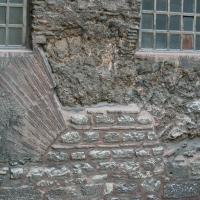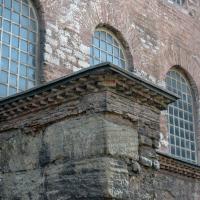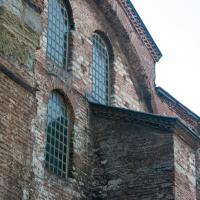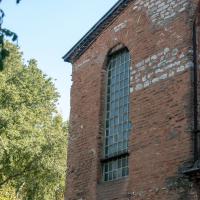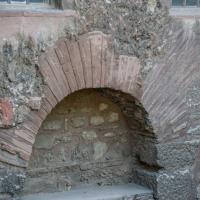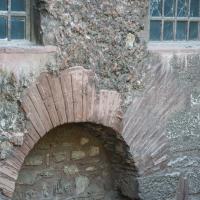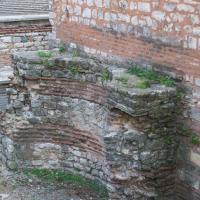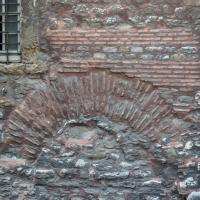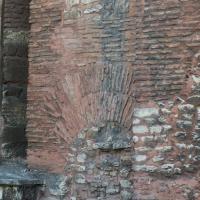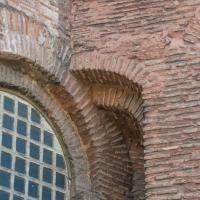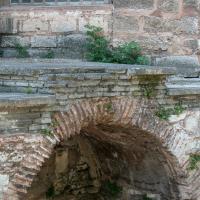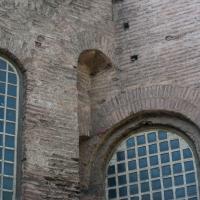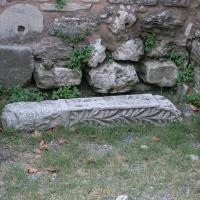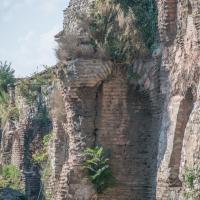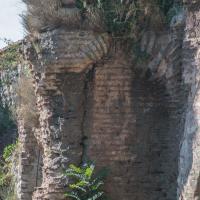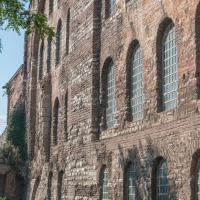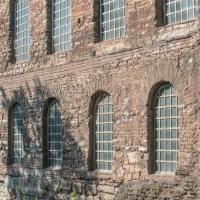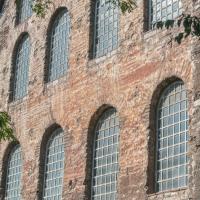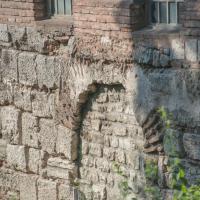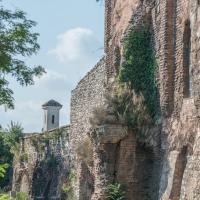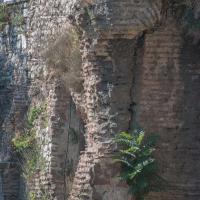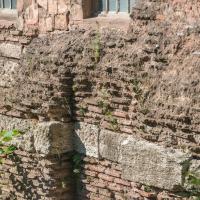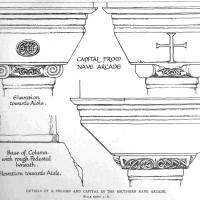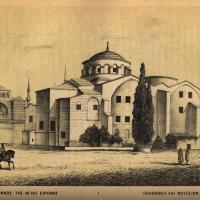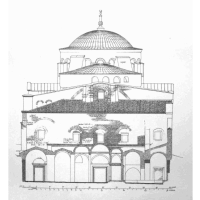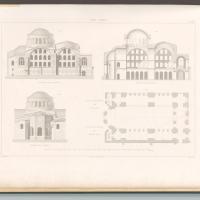Palaia Ekklesia, Aya Irini, Aya İrini Müzesi
Emperor Justinian I (527-65)
Mid-6th century; after 532 CE
Description
Hagia Eirene, the church dedicated to the peace, is situated in today’s Sultanahmet, in close distance to the Church of Hagia Sophia, in the outer garden of the Topkapı Palace complex.
The early history of the church is obscured by the constant restoration works large;y following the destruction caused by fires and earthquakes. Two emperors Constantine and Constance are associated to the first patronage, although there is another tradition that dates the church to the pre-Constantinian times (Janin 1969: 108).
Due to its close distance to Hagia Sophia, the structure was certainly used as the main church of the newly founded city, at least until 360, the year of the consecration of Hagia Sophia. Over the years, Hagia Eirene has always temporarily replaced Hagia Sophia, especially while the Cathedral has been under restorations.
According to the life of Stephen the Younger, the first ecumenical council took place in the Church of Hagia Eirene in the year 360 (Janin 1969: 108). A few decades later, in 398, the church was repaired for the first time, as it was partially burnt down during the controversy with the Arians (Janin 1969: 109).
In the year 438, the relics of John Chrysostomos that were transferred from Asia Minor were known to be first kept in Hagia Eirene, before they were transferred to the Holy Apostles (Janin 1969: 109).
During the Nika riots in 532, Hagia Eirene was burnt down together with Hagia Sophia and the neighboring monuments, and respectively restored by the emperor Justinian.
However, the major destruction to the church had happened by the earthquake of 740, which shook all the eastern Thracian territories, and caused serious destruction of various towns and settlements (Theophanes, Chronographia, 572). Historical evidence tells us that the Church of Hagia Eirene was subsequently rebuilt by the emperor Constantine V, which required the re-adaptation of the church according to the eight-century liturgical needs that led the transition of the domed-basilical plan to the cross-domed church type (Peshlow 1977: 212-3).
Among the councils held in Hagia Eirene, the council of 867 plays an important role, since it is during this council when the patriarch Ignatius declared the deposition of Photius (Janin 1969: 109).
In their travelogues, several Russian pilgrims refer to the church of Hagia Eirene as ‘patriarcheion’, possibly based on the patriarchal tradition to use the church as the main chapel.
Following the Ottoman conquest of the city in 1453, the Church of Hagia Eirene remained within the imperial palace walls, and it was never converted to a mosque, but rather used respectively as arsenal, and later in the nineteenth century turned to the first imperial museum of the Ottoman Empire (Shaw: 2003).
History of Archaeological Work
In the eighteenth century, F.L. Cassas presented the first sketches of the topographical drawings of Hagia Eirene. In the next century, the first archaeological study of the structure was conducted Salzenberg who also prepared the first architectural plan, as well as a number of section drawings. Over the years, the structure had been examined by Choisy who wrote a general survey of the Byzantine architecture. Yet the first detailed monograph of the church was published by Gurlitt and George.Cahide Tamer, who restored various Byzantine monuments in Istanbul, conducted the first restoration campaigns in 1955-6. In the years 1946-7, the Hagia Sophia Museum directorate has conducted the first archaeological excavations related to Hagia Eirene, yet the excavations' results had been poorly documented, and never fully published - except the plan of Mahmud Akok about which we are briefly informed by the later publications of Mamboury and Perkins whose publications only rely on their later visits to the site (Dirimtekin 1962: 161; Mamboury 1951). Over the years, Dirimtekin and Öz have also excavated the surrounding territory of the structure respectively in the years between 1958-61 and between 1974-76 (Dirimtekin 1962).After the publication of the two major monographs by Urs Peschlow in 1977 and 1996, the so-called Sampson hospice ‘xenodocheion’ that is located adjacent to the structure on the southern part had been excavated by Feridun Özgümüs, yet the archaeological works conducted in the church’s vicinity remained once again unpublished.Dirimtekin analyses the archaeological remains that surround Hagia Eirene under three major groups based on their location. The first group consists of the circular structure on the northeast corner of the church– 4 meters in diameter, and identified as the possible skeuphlakion of the church, as its size had been considered to be too small for the baptistery-, and the rectangular hall on the eastern part with three entrances. The second group located in the northeast, consists of a lavish marble pavement, of which function could not be explained because of the spatial limitation of the archaeological excavations due to the later Ottoman walls of the imperial mint, the 'Darphane'. Finally the third and most important group, the ruins on the south, identified as the so-called Sampson hospice, which extends to the atrium and is characterized by the colonnaded (with impost capitals) atrium surrounded by a number of rooms and centered by a rock-carved cistern, and a possible later martyrium –in the second half of the eleventh century- decorated by frescoes of the Virgin Blachernitissa.
Map Location
Bibliography
- Dirimtekin, Feridun, “L'église Ste-Irène,” Corsi Ravenna 2 (1956): 41-45.
- Dirimtekin, Feridun, “Les fouilles faites en 1946-47 et en 1958-60 entre Ste-Sophie et Ste-Irène à Istanbul,” CahArch 13 (1962): 161-85.
- Ebersolt, Jean. Les Églises de Constantinople (London, 1979): 53-73.
- Erder, Ayten, 'St. Iren’in Güney-Doğusundaki Bizans Sarnıcı,' Ayasofya Müzesi Yıllıkları 2 (1960): ?
- George, Walter S., The Church of St. Eirene at Constantinople (London, 1913).
- Grossmann, Peter, “Zum Atrium der Irenenkirche in Istanbul,” IstMitt 15 (1965): 186-207.
- Janin, Raymond, La Géographie ecclésiastique de l'empire Byzantin, première partie: le siège de Constantinople et le Patriarcat oecuménique, les églises et les monastères (Paris, 1969): 107-111.
- Mathews, Thomas, The Early Churches of Constantinople (Pennsylvia, 1971) :11-19.
- Müller-Wiener, Wolfgang, Bildlexikon zur Topograhie Istanbuls (Tübingen, 1977): 112-117.
- Πασπάτης, Αλέξανδρος, Βυζαντιναί μελέται Τοπογραφικαί και ιστορικαί (Κωνσταντινούπολης, 1877): 336-338.
- Peschlow, Urs, Die Baugeschichte der Irenenkirche in Istanbul neu betrachtet (Mainz, 1996).
- Peschlow, Urs, Die Irenenkirche in Istanbul: Untersuchungen zur Architektur. Istmitt. 18. (Tübingen, 1977).
- Ramazanoğlu, Muzaffer, Sentiren ve Ayasofya Manzumesi (Istanbul, 1946).
- Ramazanoglu, Muzaffer, Neue Forschungen zur Architekturgeschichte der Irenen-Kirche und des Komplexes der Sophienkirche (Heidelberg, 1952).
- Tamer, Cahide, İstanbul Bizans Anıtları ve Onarımları (Istanbul, TTOK Yayınları: 2003).
- TANSUĞ, Sezer, 'Sent İren Kilisesinde İlk Mozaik Onarımı,' Ayasofya Müzesi Yıllıkları 4 (1962): ?
- Walter, S.George, Church of Saint Eirene at Constantinople (London, 1913).
For the history of Hagia Eirene as the first museum, See; Shaw, Wendy, Possessors and Possessed: Museums, Archaeology, and the Visualization of History in the Late Ottoman Empire (Berkeley, 2003).

